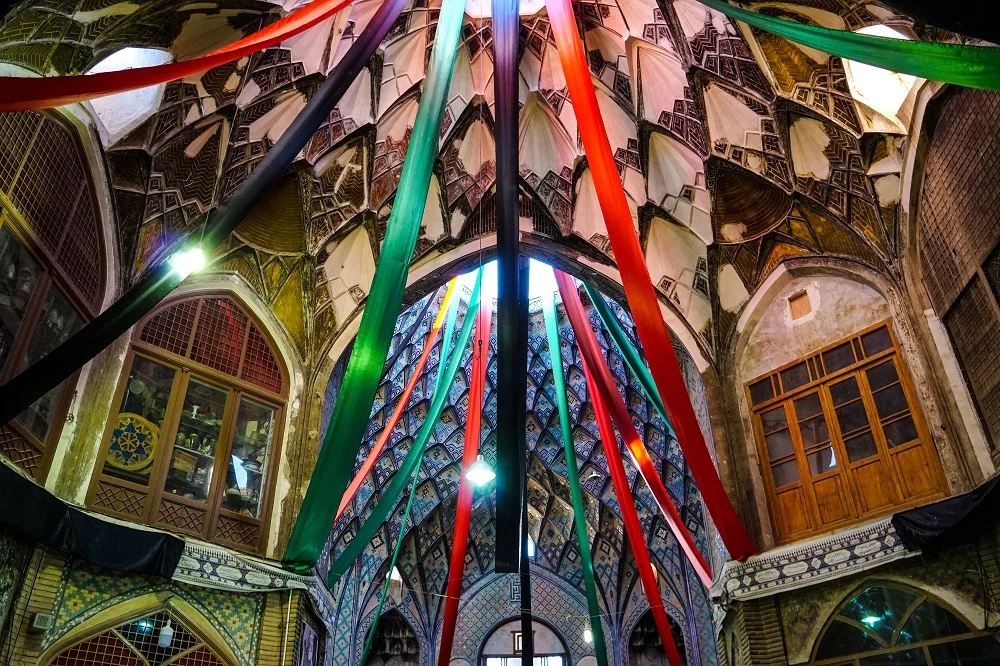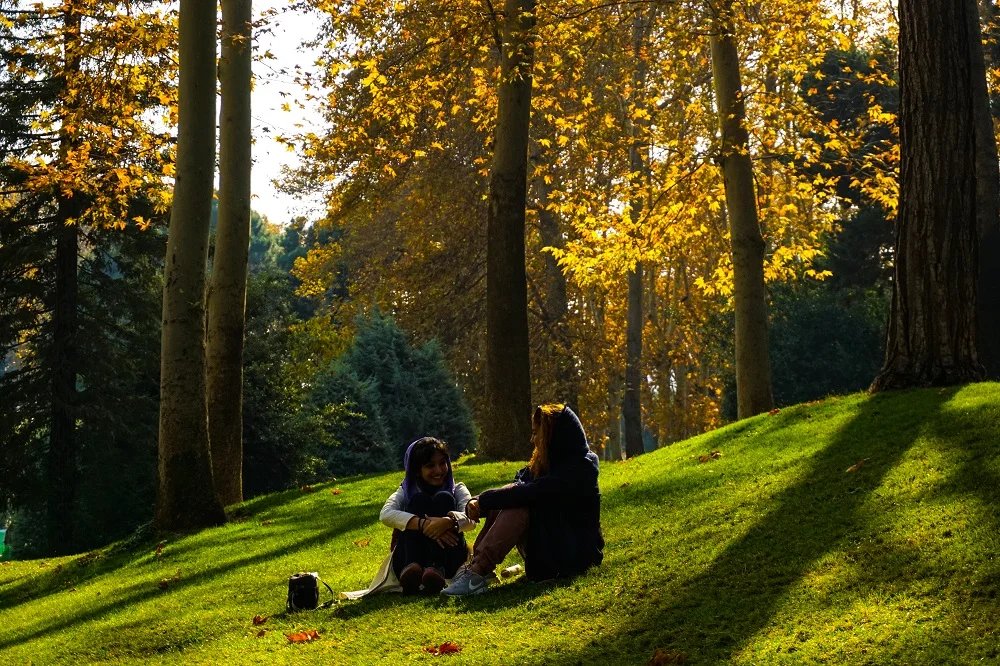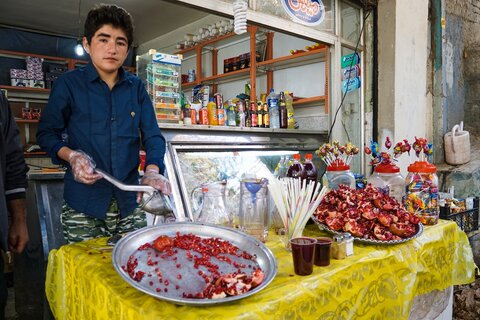Iran (IMNA) - The places to visit in Iran were often overshadowed by the friendly conversations with people. Every walk in the park, a visit to the mosque, or a train ride to the other end of the city were often met with tea requests and more gifts than we could fit in our backpacks.
Here’s a photo-journey depicting the people that matter and the Persian landscapes that carries dreams and stories of the people that I met, and how a country as warm as Iran should be given a visit.

Tehran
The capital of Iran, Tehran - a bustling metropolis surrounded by the Alborz range
We started our journey in bustling Tehran, not knowing what to expect in this city of 14 million people. It reminded me of the hustle and bustle of India, but as I explored the streets of Northern Tehran, I came across beautiful houses lined with Cedar trees. There were open courtyards, traditional earthy beige houses with stunning Islamic architecture (just look up to the roof of every building, bazaar and houses!)

Iranians can’t do without the pomegranates
It is safe to say that Persians love their pomegranates known as ‘Anar’. Every street, park or Iranian household that we entered into served us the pomegranates. It was often an ice breaker or a subtle act of hospitality. It is served in stews, as candies, and mixed into main dishes along with walnuts and other dry fruits. I was even told that pomegranates are even mentioned in the Koran and the Bible. Some believe the apple in the Garden of Eden was a pomegranate.

Learning the art of picnicking in Iran
As my Couchsurfing host showed me Tehran, I came across Iranians basking in the November light holding large picnic gatherings everywhere where there is a little patch of dirt. Copious amounts of tea, Barbadi (bread), jam, cheese and their endless sense of humour since to be the subject of the day. They easily choose to focus on the things that give them the most happiness, and finding joy to express their current state of mind. We visited several parks such as Abo-Atash park and the Jamshidiyeh Stone Garden.

Seeing where the Shah of Iran once used to live, Niavaran Historial Complex and Sa’dabad Complex
When I posted a public announcement on Couchsurfing, Niloo reached out to me quickly. She used to study in Malaysia for couple of years and was excited to reconnect with Malaysians who had come to Iran. After exchanging our contact information, Niloo gladly offered to show us the hidden gems of Tehran. She brought us to Niavaran Historical Complex where the Shah of Iran used to live before the Iranian revolution.
It was a stunning and beautiful place where we could see the rich Iranians dressed to the nines and speaking perfect English at the garden cafe. The Autumn trees and lush greenery made it hard to believe that I was in Iran. It made me feel quite at home. Who knew that besides the crazy eight-lane highways and Tehran’s polluted cities that were trees this beautiful and enchanting?

Heading Towards The Silicon Valley of Iran, Pardis Technology Park
Just 20km outside of Tehran’s metropolitan area lies Pardis Technology Park, as referred to by my host Mostafa “The silicon Valley of Tehran”. A newly planned city with about 200,000 inhabitants and thousands of other engineers and IT consultants.
We were invited by Mostafa to visit his town and learn more about the outskirts of Tehran. As he had a busy shift to attend to, he outsourced his hospitable duties to his friend who had just finished the midnight shift and was ready to show us his village, Aru in the central district of Damavand county.
The next 24 hours involved trying out his local bread, climbing over a random hill in Iran and getting caught in a hailstorm continued by supermarket hunting for the best spices available in Asian cooking.
![]()
Yazd
Courtyards like these in Iran’s Old Mud Town, Yazd
I was pleasantly surprised how Iran’s old mud-town was stunning in every aspect and was unlike any other place that I have visited. Globalization may have erased traditions and skills but not in Yazd, Iran’s mud-town. People are trained to be ecological, rather than technological.
In 2017, the Global Energy Award was conferred to Yazd for its advantages in conserving and making optimum use of energy in view of its architecture. It is also a UNESCO World Heritage site known to have the oldest community in Iran, the Zoroastrians.
Here’s how I found that Zoroastrianism was the main religion in Iran where you can find old scriptures, talk to Zoroastrians and understand their religious conquests. Over here, in this picture, I found a place which was a “budget hotel” called the Yazd Friendly Hotel but it had the most beautiful courtyard.



Your Comment